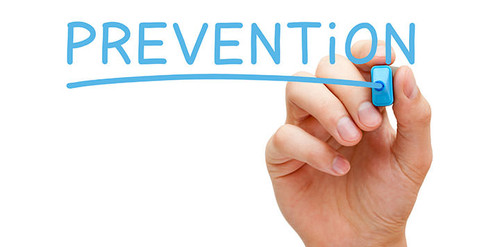What's Best for Chafing? Preventative measures, solutions & more
Posted by Jack Miller on 24th Jan 2022
Chafing is an issue that affects not just avid exercisers, but anyone at any time. Which begs the question, what's best for chafing?
Chafing happens when skin rubs against itself too much. It can lead to red, irritated patches on the skin that may even ooze or bleed. If you're reading this article then it's likely that you've experienced chafing before, and are looking for some tips on how to prevent it from happening again. We have a few suggestions below!
Where does chafing happen?
The thighs are a particularly common area, but chafing can happen in a number of places. These include under the arms, on your feet from ill-fitting shoes, between the skin and a waistband/belt and on nipples from shirt rash.
What's best for preventing chafing?
Tip 1: Wear looser clothing
On chafing areas, it's recommended to wear loose-fitting clothes. This is because tight clothing can irritate the skin and makes it more likely to chafe.
This is especially relevant for athletes who wear sportswear, such as running shorts or cycling jerseys. These types of clothes are often very tight-fitting so if you're going to be doing a lot of activity in them they should really only be worn for an hour or two at a time.
Tip 2: Invest in anti-chafe gear
Alongside the numerous powders and lotions you can buy, you can also invest in anti chafing underwear.
Thigh guards are a cost-effective way to stop chafing, and come in a variety of sizes.
Tip 3: Avoid moisture and friction
The combination of these two is a killer recipe for chafe.
This is because moisture helps skin become soft and move around, while friction causes skin to rub against itself. This can be a problem when you're sweating or in wet conditions.
To avoid chafing during any activities involving moisture (e.g., running) make sure your clothes are completely dry before getting started, or wear clothing specifically designed to keep you dry, such as a water-resistant running jacket.
Additionally, try to avoid rubbing your skin against any surfaces - this might mean carrying a backpack on one shoulder instead of both, or using a soft fabric such as a bandanna to tie back long hair.
Chafing cures and remedies
This is all well and good to prevent chafing, but what if you're already experiencing chafing?
There are some simple solutions and remedies to combat the chafe. These include:
Soothing lotions and balms
A lotion or balm can sometimes be all it takes to reduce chafing, especially if it's mild. Look for a soothing product that contains ingredients like Aloe Vera, Chamomile or Tea Tree oil.
If you're finding that your current go-to lotion isn't cutting it, then consider switching to an anti-chafe balm instead - these are specifically designed to help soothe irritated skin.
Topical steroids
For particularly severe or recurring cases of chafing, a topical steroid may be prescribed by your doctor.
This is a cream or ointment that you apply directly to the skin and helps to reduce inflammation and swelling.
So, what's best for chafing?
Prevention will always be better than fixing an existing problem. Where you can, we recommend following tips to avoid chafe in the first place.
You can view our range of anti-chafe thigh guards here.

